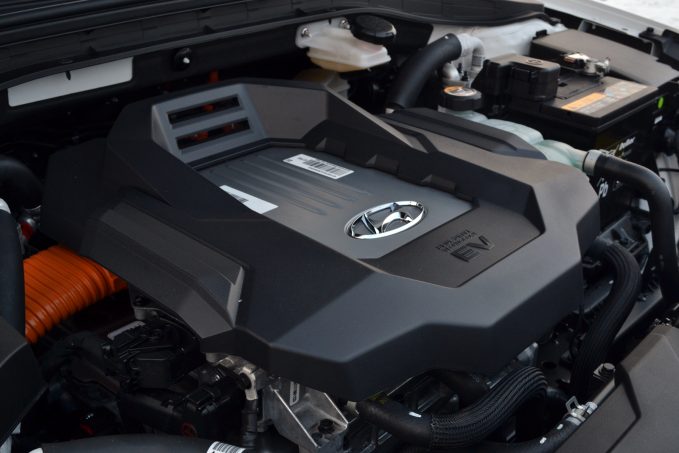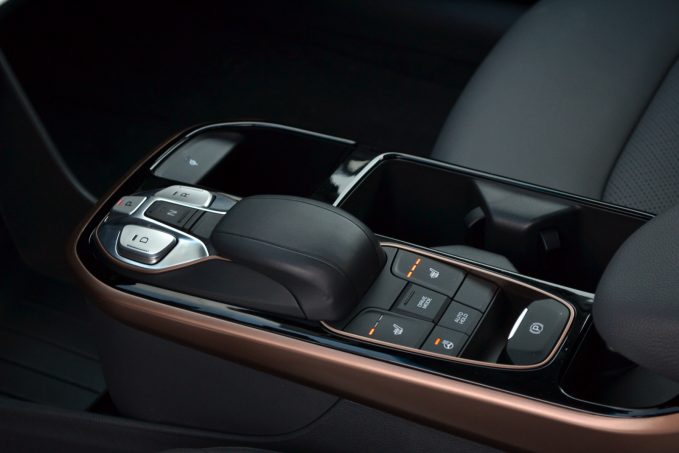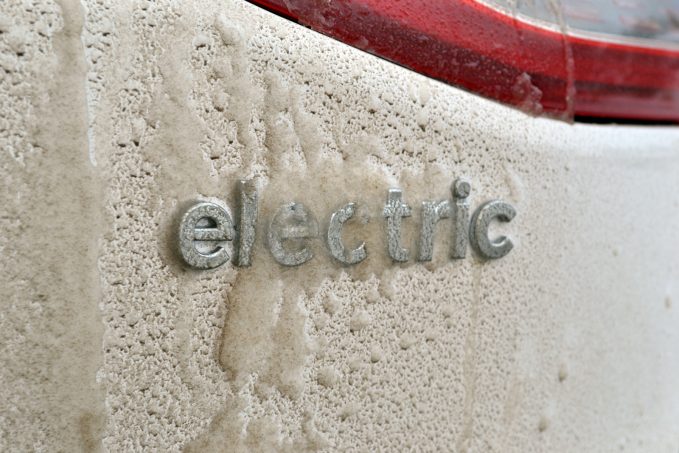It’s unlikely this is what Hyundai had in mind for the media drive of the all-new Ioniq Electric, the brand’s first real attempt at breaking into the slow-selling EV market.
What exactly this entails is an unexpected bout of unseasonably awful weather in Kelowna, B.C. It’s not unrealistic to expect temperatures in the neighborhood of 46°F (8°C) this time of year in the beautiful Okanagan Valley; instead it’s about 23°F (-5°C) and snowing, with some freezing rain mixed in for good measure. This poses obvious problems.
Cold weather is the enemy of electric vehicles. From its effects on an EV’s battery itself to the additional energy needed to run the car’s climate control system, range is reduced in a big way when the mercury plunges. Yet here we are, ready to set out on a journey intended to cover about 70 miles (113 kilometers), or a little more than half the estimated range of the Ioniq Electric. Only our tester isn’t showing anywhere near the 124-mile (200-kilometer) range the car is capable of despite efforts to top up the charge as much as possible. That nagging feeling of range anxiety is quietly creeping in, even if we don’t want to admit it.
Reasonable Driving Range
Part of that range anxiety comes from what appears on paper to be a relatively limited driving range. Packing a 28-kWh battery, the Hyundai Ioniq Electric is good for an estimated 124 miles (200 kilometers) of driving. That’s barely better than the aging Nissan Leaf (107 miles, 172 kilometers), which was introduced way back in 2010, and almost half the range of the all-new Chevrolet Bolt (238 miles, 383 kilometers), though the Bolt’s battery boasts twice the capacity.
ALSO SEE: 2017 Chevrolet Bolt Review
Equipping the car with a bigger battery would no doubt provide plenty of additional peace of mind, though it would do so at the peril of cargo space. Because the battery pack in the Ioniq Electric is mounted beneath the trunk, it already makes do with less space than the hybrid version. With 23 cu-ft (651 liters) of space behind the back seats, it offers substantially less volume than the 26.5 cu-ft (750 liters) in the Ioniq Hybrid.
Regardless of where it stands in the hierarchy of estimated EV range, rest assured the Ioniq Electric can easily cover most drivers’ daily commutes, especially if they make use of charging stations at work. Also helping curtail concerns over driving range is the available heat pump, which works to reduce the amount of battery power burned by the climate control system, and a driver-only switch that doesn’t bother regulating the temperature of the whole cabin when it’s only occupied by one person.
Charging, meanwhile, can be done in a trio of ways each faster than the last. A standard 120-volt household outlet will do the job in 24 hours, while a Level II charger running 240 volts takes about four-and-a-half hours. Plugging the car into a Level III fast charger cuts that time to about 30 minutes.
Familiar Driving Feel
Setting out for our drive from a snow-covered parking lot, the car’s estimated range of about 105 miles (169 kilometers) is looming large. Our route has us heading beyond West Kelowna, where winding roads carve their way through wine country. Detours are ill-advised, for fear of running out of electrons, and so we agree to follow what’s been mapped out for us — with the minor addition of a pitstop at a pharmacy for some much-needed cold pills.
Parlaying power from the battery to the front wheels is an electric motor and a single-speed reduction gear transmission, while a set of regenerative brakes can send energy back to the battery. The electric motor is good for 120 horsepower and a stout 215 pound-feet of torque, all of which comes online as soon as the accelerator pedal is pressed.
ALSO SEE: 2017 Hyundai Ioniq Hybrid Review
While the Ioniq Electric is hampered somewhat by the additional heft of its beefy battery, the instant torque from the electric motor helps to disguise it and makes the car feel nimble off the line. While it can definitely be described as docile, it drives surprisingly similarly to a conventional gas-powered car.
While it tends to float over uneven pavement like an old Lincoln thanks to its low center of gravity created by the battery, the car features taut and responsive steering that’s superior to its gas-electric sibling, the Ioniq Hybrid. It isn’t, however, quite as sure-footed as that car on slippery surfaces, and is left looking for traction at times.
Slowing the surprisingly svelte Ioniq Electric — it weighs a mere 3,164 lb (1,435 kg) in base trim, and 3,285 lb (1,490 kg) when fully equipped — is a braking setup with four levels of regeneration each more aggressive than the last. Operated through paddles on the steering wheel, the level of regeneration can be shut off completely or cranked up to maximize how much energy is being put back into the battery. The brakes are definitely jarring, and they don’t benefit from the regen-on-demand function found in the Chevy’s electrified duo, the Volt and Bolt, but one-pedal driving is possible with the regeneration level maxed out.
An Affordable Electric
The Ioniq Electric may not compare to the likes of the Chevy Bolt — or the pending Tesla Model 3 — when it comes to range, but it has it beat when it comes to price. Base models start at just $29,500 (Canadian cars are estimated to start at $35,000), and come equipped with features like push-button start and a seven-inch touchscreen infotainment system with Android Auto and Apple CarPlay capability. Meanwhile, expect a fully loaded version to cost somewhere in the neighborhood of $35,000 (estimated at $42,000 in Canada). That poses an interesting value proposition when compared to virtually every other EV on the market, and one that becomes even more interesting when available government incentives are added. Those rebates bring the price low enough to compete with gas-powered compacts like the similarly-sized Hyundai Elantra.
ALSO SEE: 2017 Hyundai Elantra Sport vs Honda Civic Touring
Even without all the added luxuries included in the leather-lined Limited trim, the Ioniq Electric has an upscale look to its interior. The layout is clean and modern, while the streamlined center console features a by-wire shifter that features buttons in place of a lever. That lends itself to the front of the cabin feeling far larger than the car’s compact dimensions would suggest. Space in the rear seats, meanwhile, is far from generous, but there’s more than enough head- and legroom to transport a pair of passengers in the back.
The Verdict: 2017 Hyundai Ioniq Electric Review
Ending our drive a short distance from where we started, our tester is still showing nearly 50 miles (80 kilometers) of range remaining — an impressive feat considering the distance we covered and the conditions we covered them in. Add in the Hyundai Ioniq Electric’s conventional driving dynamics, and Hyundai’s first all-electric offering is an impressive one, even with the cold winter weather rearing its efficiency-sapping head.











